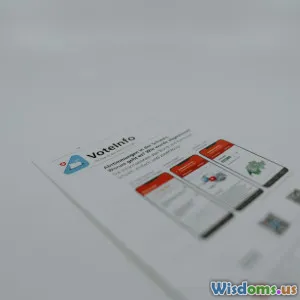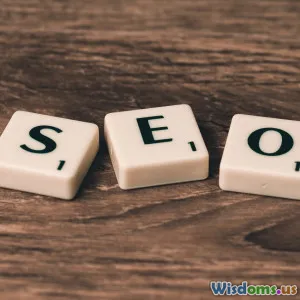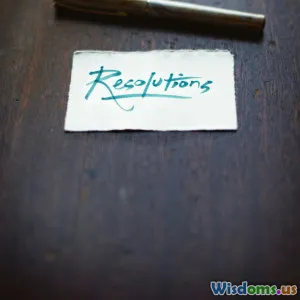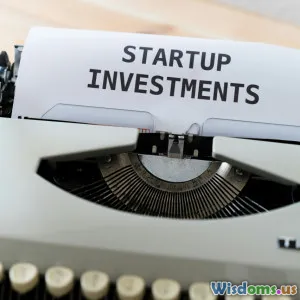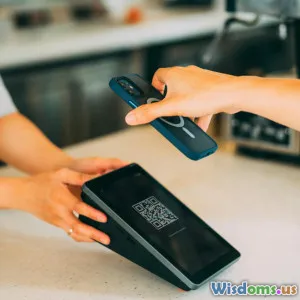
Can You Really Automate Your Entire Sales Funnel? What the Experts Say
10 min read Explore if full sales funnel automation is achievable and what leading experts reveal about its benefits and challenges. (0 Reviews)
Can You Really Automate Your Entire Sales Funnel? What the Experts Say
In today's fast-paced digital world, automation has permeated nearly every business function—from marketing emails to customer service chatbots. Sales, a traditionally human-driven process, has increasingly entered the automation arena. But the question on many marketers’ minds is: Can you truly automate your entire sales funnel? Or is there an essential place for human interaction and improvisation? This article delves deep into the expert perspectives, the real-world data, and the subtleties behind automation in sales funnels.
Understanding the Modern Sales Funnel
Before assessing automation, it’s critical to clarify what a sales funnel entails in the contemporary context. The sales funnel is a metaphor describing the buyer’s journey across three broad phases: awareness, consideration, and decision.
- Awareness: Potential customers discover a product or solution through ads, SEO, social media, or content marketing.
- Consideration: Prospects evaluate options, engage with content, attend webinars, or download resources.
- Decision: Final purchasing action, negotiation, and onboarding.
Today’s funnels are far from linear; they ebb and flow influenced by omnichannel touchpoints. Complexity has increased, but technology promises economies of scale via automation.
What Does Automating a Sales Funnel Really Mean?
Sales funnel automation broadly refers to the deployment of software tools and workflows to streamline each step of the buyer's journey. This encompasses:
- Lead capture via automated forms or chatbots
- Lead nurturing using personalized email sequences
- Scoring leads using behavioral data
- Task automation for sales reps (e.g., meeting scheduling, follow-ups)
- Analytics tracking funnel conversion metrics in real time
Examples abound: HubSpot, Marketo, and Salesforce offer powerful automation suites, integrating customer relationship management (CRM), email marketing, and analytics.
However, does automation mean removing human involvement entirely? Experts caution against this interpretation.
What the Experts Say: Automation vs. Human Touch
Automation Maximizes Efficiency But Has Limits
Claire Suellentrop, Sales Operations Manager at a SaaS firm, notes, “Automation is fantastic for scaling lead generation and initial contact, but closing high-value deals almost always requires personalized conversations. The human element builds trust and uncovers nuances no algorithm can predict.”
According to data from McKinsey, companies that successfully blend automation with informed human intervention along the funnel achieve up to a 20% higher conversion rate compared to full manual processes.
Personalization Is King—and Automation Helps Deliver It
Marketers often fear automation creates robotic interactions. Yet, Harvard Business Review distinctly argues automation enables more relevant, timely messaging. For example, behavioral-triggered emails—as opposed to generic blast campaigns—boost click-through rates by 152%, and can be handled by automation tools.
Rick Taub, co-founder of Formstack, states, "Automation is a force multiplier that allows sales teams to focus on personalized selling moments rather than repetitive tasks. It’s the difference between working harder and working smarter."
Full Automation—When Is It Viable?
Full funnel automation is often feasible in industries dealing with lower-priced, high-volume, or commodity-like products where buying decisions require minimal deliberation. For instance, e-commerce sites selling consumer electronics or subscription software where instant sign-up and checkout represent the decision moment.
Amazon’s checkout process exemplifies this: from product discovery enhanced by AI recommendations to instant payment and delivery scheduling, everything operates seamlessly with little human input.
Yet, for B2B enterprises selling complex solutions, automation can carry prospects just so far before expert human engagement becomes critical.
Components of a Fully Automated Sales Funnel
While experts debate the feasibility of full automation, modern technology allows numerous funnel stages to be autonomously managed:
1. Lead Generation
- Pay-per-click (PPC) ads with dynamic keyword insertion
- SEO optimized landing pages
- Social media bots engaging users
2. Lead Nurturing
- Automated email drip campaigns tailored by user behavior
- Interactive content such as quizzes or calculators generating personalized insights
3. Lead Scoring
- AI-driven models aggregating lead data, forecasting likelihood to buy
4. Meeting Scheduling
- Calendar tools like Calendly integrated with CRM systems
5. Sales Closing
- Chatbots programmed to handle standard objections or FAQs
- E-signature solutions for contract signing (DocuSign, Adobe Sign)
6. Post-Sale Engagement
- Automated onboarding emails
- Customer satisfaction surveys and upsell offers
Still, each step calls for human oversight to review data outliers, step in with sales expertise, and maintain genuine relationship-building.
Challenges of Automating the Entire Funnel
Despite impressive advances, full funnel automation harbors these eloquent challenges:
Data Quality and Integration
Automated systems depend entirely on clean, well-integrated data. Many companies operate multiple disconnected systems causing fragmentation. Gartner reported that by 2023, 75% of digital initiatives failed due to poor data integration.
Contextual Understanding
Complex buyer contexts—like organizational politics, timing, or competitive landscape—resist automation. Machines lack emotional intelligence and empathy critical in nuanced negotiations.
Risk of Over-Automation
Excessive automation risks making communications appear impersonal, annoying prospects, or missing subtle buying signals. A study by Salesforce noted 60% of consumers want personalized experiences, yet only 8% of companies deliver them effectively via automation alone.
Cost and Maintenance
Building and maintaining complex automated funnels requires significant upfront investment and ongoing tweaking. Smaller businesses may lack expertise and resources.
Hybrid Approach: Best of Both Worlds
Most thought leaders advocate a hybrid strategy—leveraging automation to accelerate and scale routine tasks while reserving bespoke human interaction for high-value engagements.
For example, Drift’s chatbot initiates conversations, qualifies leads, but seamlessly hands off to sales reps when queries grow complex. This reduces response time dramatically without compromising quality.
Salesforce’s State of Sales (2022) survey found top-performing organizations blend 65% automation and 35% personal selling, optimizing efficiency and conversion.
Steps to Successfully Automate Your Funnel
- Map Your Funnel Entirely: Identify every touchpoint and decision node.
- Assess Automation Suitability: Determine which stages can be fully or partially automated.
- Choose Integrated Tools: Aim for platforms that facilitate seamless data flow.
- Implement Incrementally: Test automation in stages; measure impact and optimize.
- Maintain Human Oversight: Establish protocols for when to engage reps.
- Iterate with Customer Feedback: Continuously refine based on prospect and customer input.
Conclusion: Can You Fully Automate Your Sales Funnel?
The short answer—sometimes, but rarely is it advisable for complex sales. Full automation is often constrained by industry, product complexity, and buyer expectations. Experts agree that automation excels at increasing efficiency, standardizing initial contact, and scaling nurturing efforts. However, the irreplaceable human skills in empathy, relationship-building, and dynamic problem-solving preserve a critical role in higher funnel stages.
Instead of chasing the myth of total automation, businesses should strive for a smart balance: use automation as a strategic tool to free up time for meaningful human engagement. The future of sales lies in this synergy that respects both technological innovation and the enduring power of human connection.
References:
- McKinsey & Company, “The New Frontiers of Sales Automation,” 2023
- Harvard Business Review, “How Automation Enables Personalized Marketing,” 2022
- Salesforce, “State of Sales Report,” 2022
- Gartner, “Data Integration Challenges,” 2023
By embracing automation thoughtfully, your sales funnel can become faster, smarter, and more scalable without losing the human touch crucial for long-term success.
Rate the Post
User Reviews
Popular Posts















